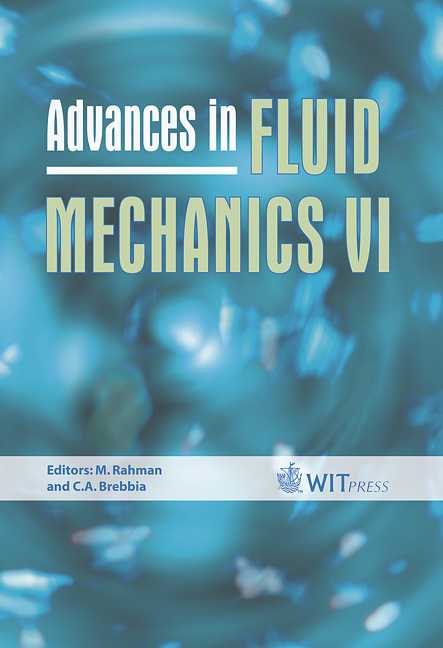Drag Reduction In Two-phase Annular Flow Of Air And Water In An Inclined Pipeline
Price
Free (open access)
Transaction
Volume
52
Pages
10
Published
2006
Size
440 kb
Paper DOI
10.2495/AFM060371
Copyright
WIT Press
Author(s)
A. Al-Sarkhi, E. Abu-Nada & M. Batayneh
Abstract
Measurements of drag reduction for air and water flowing in an inclined 0.0127 m diameter pipe were conducted. The fluids had an annular configuration. The injection of drag reducing polymers (DRP) solution produced drag reductions as high as 71% with a concentration of 100 ppm in the pipeline. A maximum drag reduction that is accompanied (in most cases) by a change to a stratified or annular stratified pattern. The drag reduction is sensitive to the gas and liquid superficial velocities and the pipe inclination. Maximum drag reduction was achieved in the case of pipe inclination of 1.28o at the lowest superficial gas velocity and the highest superficial liquid velocity. Keywords: inclined pipeline, annular gas-liquid flow, drag reducing polymers, injection method. 1 Introduction The injection of small amounts of high molecular weight long-chain polymers into a single-phase liquid flow can cause large decreases in the frictional resistance at the wall; this interesting finding was first published by (Toms, [1]). Two-phase gas liquid flow in pipes is regularly encountered and is of great commercial importance in the natural gas and petroleum industries. This paper presents results of experiments in which drag-reducing polymers were added to the flow of water and air in an inclined pipe, with a diameter of 0.0127 m. The gas velocity was large enough that an annular flow existed. This pattern commonly occurs in natural gas/ condensate pipelines. It is characterized by a situation in which a part of the liquid flows along the wall as a liquid layer and part as drops entrained in the gas in the core of the pipe.
Keywords
inclined pipeline, annular gas-liquid flow, drag reducing polymers, injection method.





